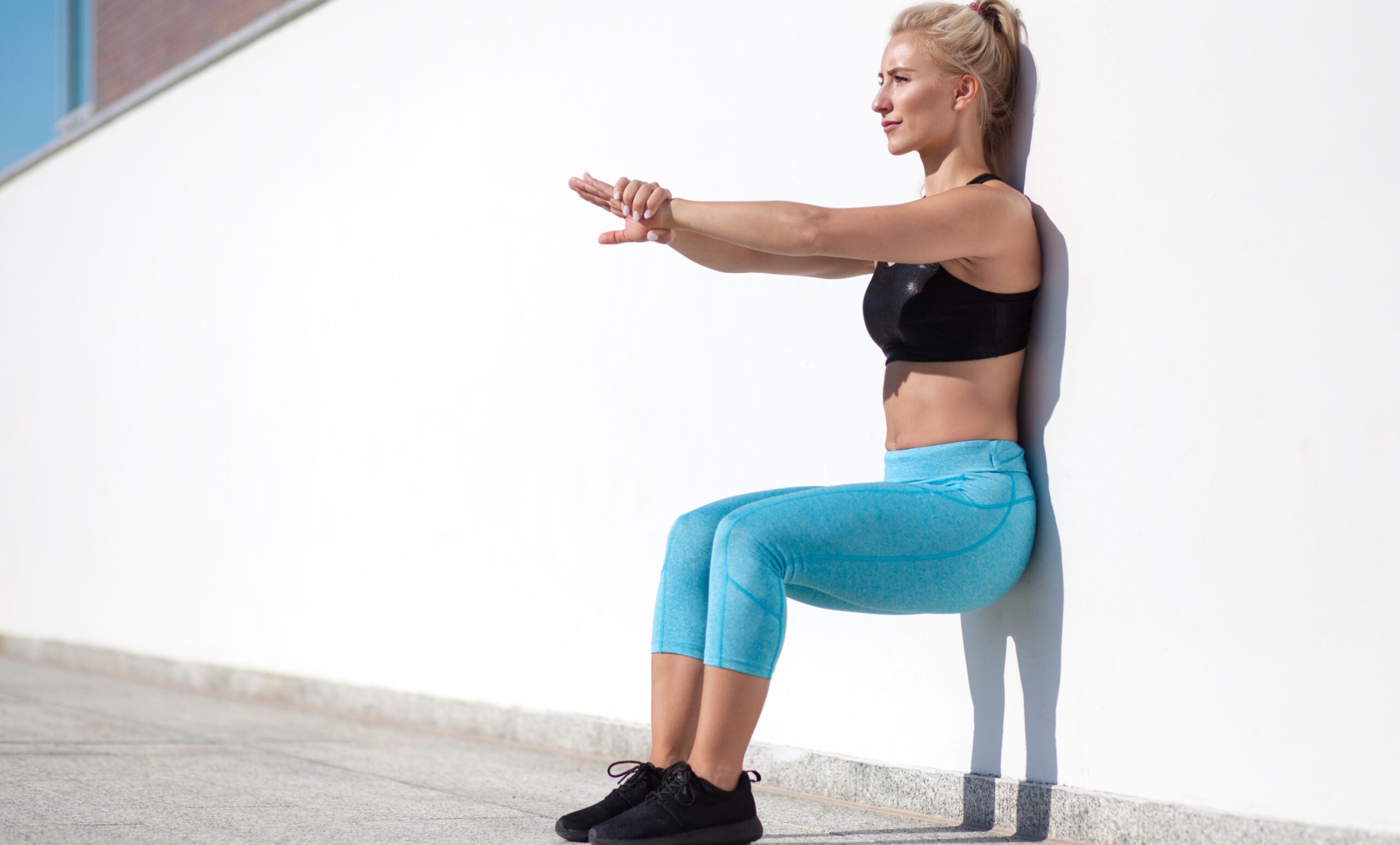Wall Squats
The wall squat exercise is a real quad burner, working the muscles in the front of your thighs. This exercise is generally used for building isometric strength and endurance in the quadriceps muscle group, glutes, and calves.
1. Start with your back against a wall with your feet shoulder width and about 2 feet from the wall.
2. Engage your abdominal muscles and slowly slide your back down the wall until your thighs are parallel to the ground.
3. Adjust your feet so your knees are directly above your ankles (rather than over your toes).
4. Keep your back flat against the wall.
5. Slide slowly back up the wall to a standing position.
To level up, add a hold time of 3-5 seconds between each repetition.
In the realm of physiotherapy, incorporating targeted exercises into your routine can significantly enhance your recovery and overall strength. The wall squat exercise is a valuable technique that focuses on strengthening your lower body, particularly the quadriceps, glutes, and core muscles. In this blog post, we will explore the benefits of the wall squat exercise in physiotherapy, discussing how it can aid in rehabilitation, improve stability, and promote optimal lower body function.
What is the Wall Squat Exercise? The wall squat exercise is a simple yet powerful movement that involves leaning against a wall with your back and performing a squatting motion. By maintaining a static position and engaging the lower body muscles, this exercise targets the quadriceps, hamstrings, glutes, and core muscles. It is commonly used in physiotherapy settings to address various musculoskeletal conditions, enhance strength, and improve functional movements.
Benefits of Wall Squat Exercise in Physiotherapy:
- Lower Body Strength and Stability: The wall squat exercise primarily targets the muscles in the lower body, including the quadriceps, hamstrings, and glutes. By regularly performing this exercise, you can strengthen these muscles, leading to improved stability, balance, and overall lower body strength.
- Improved Joint Mobility: Wall squats require bending the knees and hips, which promotes joint mobility and flexibility. Individuals with joint issues or those recovering from injuries can benefit from this exercise as it helps maintain or restore a healthy range of motion in the knees and hips.
- Core Engagement and Postural Alignment: The wall squat exercise also engages the core muscles, including the abdominals and lower back. By maintaining proper posture during the exercise, you can strengthen your core and improve postural alignment, reducing the risk of back pain and promoting a more balanced body.
- Rehabilitation after Injury: Physiotherapists often prescribe wall squats as part of rehabilitation programs for various lower body injuries, such as knee or hip injuries. The controlled and low-impact nature of the exercise allows for targeted strengthening of the affected muscles, promoting recovery and preventing future injuries.
- Functional Movement Training: Wall squats mimic the movement patterns involved in activities of daily living, such as sitting down or standing up. By improving strength and stability in these movement patterns, the exercise enhances functional abilities and overall quality of life.
Incorporating Wall Squats into Your Physiotherapy Routine: To incorporate wall squats effectively into your physiotherapy routine, it is advisable to work with a qualified physiotherapist. They can assess your specific needs, guide you on correct form and technique, and tailor a customized exercise program that includes wall squats. A physiotherapist can also provide modifications or progressions based on your individual capabilities, ensuring optimal results while minimizing the risk of further injury.
The wall squat exercise is a valuable addition to any physiotherapy routine, offering numerous benefits for strengthening the lower body, improving stability, and promoting functional movements. Whether you are recovering from an injury, managing chronic pain, or seeking to enhance your overall strength, wall squats can be an effective tool in your physiotherapy journey. Consult with a physiotherapist to receive proper guidance and maximize the benefits of this exercise. Embrace the wall squat and take strides towards a stronger and more functional lower body.

